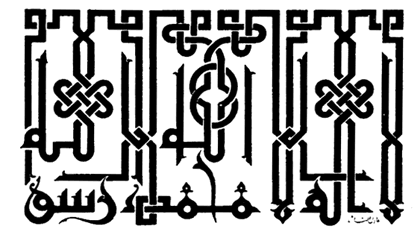|
[ Home ] [ Language ] [ Culture ] [ Geography ] [ Further Study ] The Arabic Language
Arabic is belongs to the Afro-Asiatic family of languages, and is a member of the Semitic subfamily. Arabic is closely related to Hebrew, which is spoken in Israel and Amharic which is spoken in Ethiopia. Many English words come from Arabic. Here is a list of them. The Varieties of ArabicThe Arabic language takes many forms and can be divided into three main categories:
The Alphabet:
There are no capital and lower case letters in Arabic. It is a cursive system, which means that all the writing is connected. Most of the letters in Arabic have four forms: stand alone, word initial, medial and word ending. Six of the 28 letters do not connect to the letters which follow. The Arabic alphabet is the second most used writing system in the world (our Latin alphabet is the first) and it is used to write languages unrelated to Arabic such as Farsi (spoken in Iran), Urdu (spoken in Pakistan) and Pashto (spoken in Afghanistan). * Fun with Arabic: Please go through this online tutorial in the Arabic alphabet. Click on "Take the Tour" first and then move on to "The Alphabet". Be sure to click on the "More" button on each letter page to learn vocabulary with each letter. Try to do 5-6 letters a day and you should get through it in under a week. * History and Features of Arabic script and language. Read this page from Omniglot to learn the basics about the Arabic writing system. Includes links to Arabic fonts and lessons. More examples and historical details can be found at the Sakkal calligraphy site. * Numbers in Arabic. Numbers in Arabic are written left to right, the opposite of how words are written in Arabic, but the same as we write both. The SoundsThere are many sounds which occur in Arabic which do not occur in English. Many of them are pronounced in the back of the throat are are called "gutterals." There are also "emphatic consonants" which may seem difficult to tell apart at first, but get easier to recognize with more practice. Practice listening to and pronouncing the sounds of Arabic here. VocabularyCommon Arabic words and phrases from Arabic 2000. You can click on the icon uncer pronunciation to hear how they are spoken. More Arabic phrases including numbers, colors, questions and professions. Drinks in Arabic. Learn how to say and read coffee, tea, milk and a very wide assortment of juices in Arabic! Click on the Arabic word to hear it pronounced. Google
links are advertisements and not necessarily endorsed by this
site. [ Home ] [ Language ] [ Culture ] [ Geography ] [ Further Study ] |
 Arabic
is one of the most spoken languages in the world with over 200
million speakers. It is spoken in 24 countries and is the official
language of all the countries of northern Africa, the Arabian
peninsula, and in much of the Middle East, including Iraq, Syria,
Lebanon, Jordan and the Holy Land. As the religious language
of Islam, it is also the second language of millions of Muslims
around the world. It is one of the six official languages of
the United Nations.
Arabic
is one of the most spoken languages in the world with over 200
million speakers. It is spoken in 24 countries and is the official
language of all the countries of northern Africa, the Arabian
peninsula, and in much of the Middle East, including Iraq, Syria,
Lebanon, Jordan and the Holy Land. As the religious language
of Islam, it is also the second language of millions of Muslims
around the world. It is one of the six official languages of
the United Nations. The
Arabic alphabet is written from right to left, the opposite of
how we write. It has 18 basic forms which are changed slightly
by the addition of dots to make up the 28 letters of the Arabic
alphabet. Only three of the letters are vowels and two of these
(waw and ya) represent either a long vowel or the semivowels
[w] and [y]. Otherwise, short vowels are represented by dashes
above or below the letters, but these are only used in religious
texts or texts for children and learners. Newspapers and other
written materials for adults assume you know the vowels from
context.
The
Arabic alphabet is written from right to left, the opposite of
how we write. It has 18 basic forms which are changed slightly
by the addition of dots to make up the 28 letters of the Arabic
alphabet. Only three of the letters are vowels and two of these
(waw and ya) represent either a long vowel or the semivowels
[w] and [y]. Otherwise, short vowels are represented by dashes
above or below the letters, but these are only used in religious
texts or texts for children and learners. Newspapers and other
written materials for adults assume you know the vowels from
context.